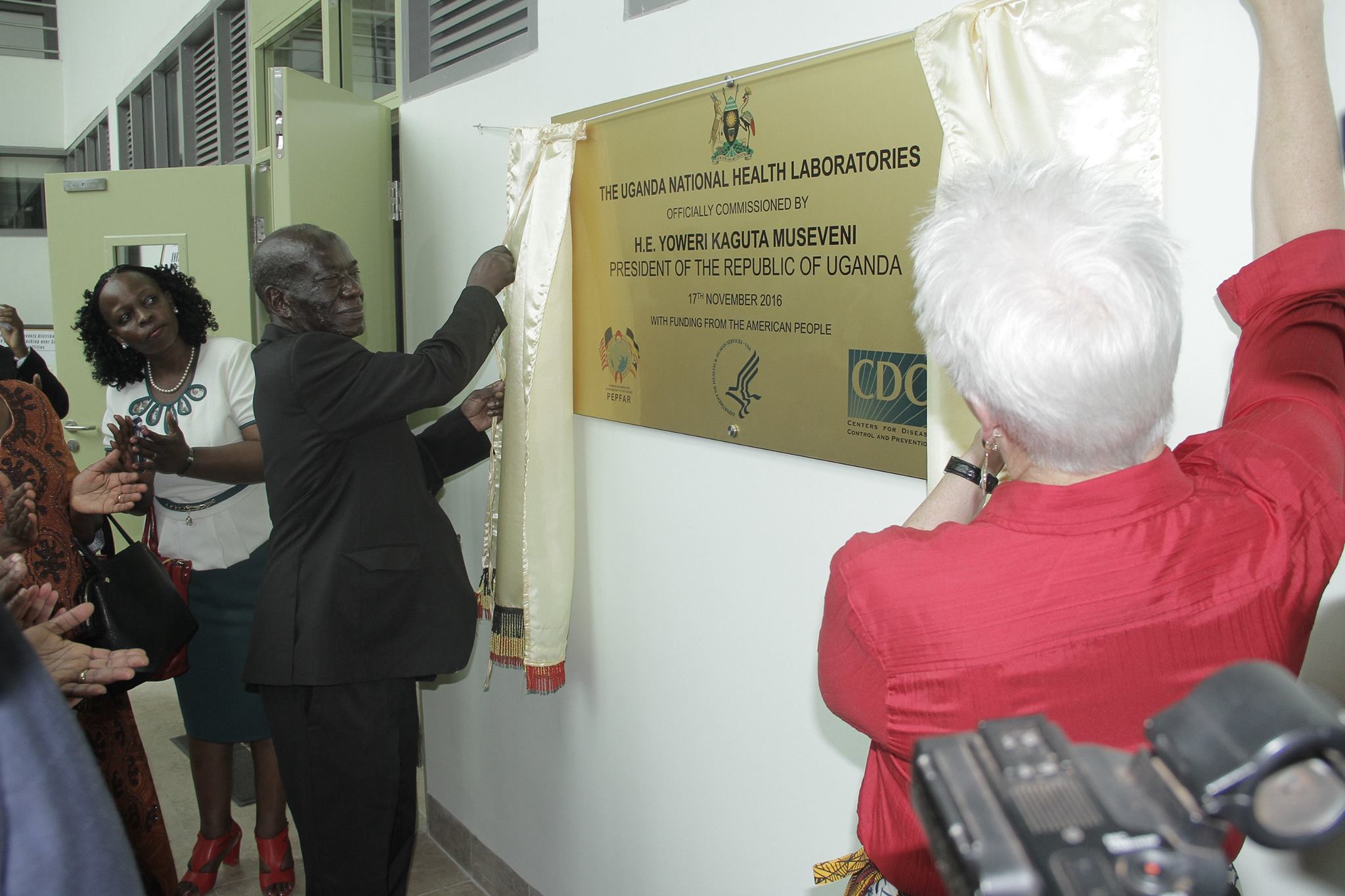
The Uganda National Laboratories Services (UNLS) and National Tuberculosis (TB) reference Laboratory in Butabika commissioned on Thursday will provide the country with modern tools in the fight against several infectious diseases.
According to officials, the Butabika laboratory has new world class infrastructure and will support health practitioners to provide more accurate and faster diagnoses while researches will be able to better track and respond to infectious disease outbreaks.
The National TB reference laboratory will serve as a supra national laboratory which receives specimen from 20 other countries. This Lab is the second of its kind in Africa and one of the 33 National TB reference laboratories in the world.
Commissioned by the Vice President of Uganda Edward Sekandi, the UNLS facility was funded by the US Government. U.S. Ambassador to Uganda Deborah R. Malac represented the United States Government during the official opening.
The National Health Laboratory will mainly focus on combating the threats posed by HIV/AIDS, through efforts that reduce Mother-to-Child Transmission of HIV, improve the capacity to monitor viral load among patients on anti-retroviral therapy, and expand tests for early HIV detection and diagnosis in infants.
The Laboratory will conduct additional screenings for sickle cell disease, Hepatitis B, cholera, plus other diseases of public health importance.

Speaking at the opening, Ambassador Malac underscored the laboratory’s importance in creating an AIDS-free generation in Uganda. “By processing viral load tests for people all over Uganda, the National Health Laboratory will help reach UNAIDS’s ambitious 90-90-90 goals to help end the AIDS epidemic here,” Ambassador Malac said.
The 90-90-90 treatment target states that by 2020, 90 percent of all people living with HIV will know their status, 90 percent of all people diagnosed with HIV will be on anti-retroviral therapy, and 90 percent of people receiving anti-retroviral therapy will have viral suppression.
“Uganda boasts of having one of the best specimen referral systems in the world which enables specimen that cannot be tested at one level be transported to where they can be analyzed and results are relayed back within 48-72 hours,” said a Ministry of Health official.
The Ministry of Health revealed that a total of 15 of Uganda’s laboratories have been selected for international accreditation. There has been a sharp increase of functional health lab units from 503 in 2004/2005 to 1600 currently spread across all levels from Health Centre III to national level while 17% of Health Centre IV laboratories have been remodeled to conform to national and basic international standards.
With funding from the US President’s Emergency Plan for AIDS Relief (PEPFAR), the US Centers for Disease Control and Prevention (CDC) provided technical assistance and $8 million for the construction of the National Health Laboratory, which was completed and officially handed over to the Ministry of Health in January 2016.
Since 2004, PEPFAR has invested nearly $3 billion in Uganda’s fight against HIV. As the largest provider of health assistance to Uganda, the U.S. Government invests $495 million each year in Uganda’s health sector to strengthen Uganda’s capacity to address HIV/AIDS, tuberculosis, malaria, maternal/child health, and emerging health threats.
****
editor@independent.co.ug
 The Independent Uganda: You get the Truth we Pay the Price
The Independent Uganda: You get the Truth we Pay the Price



